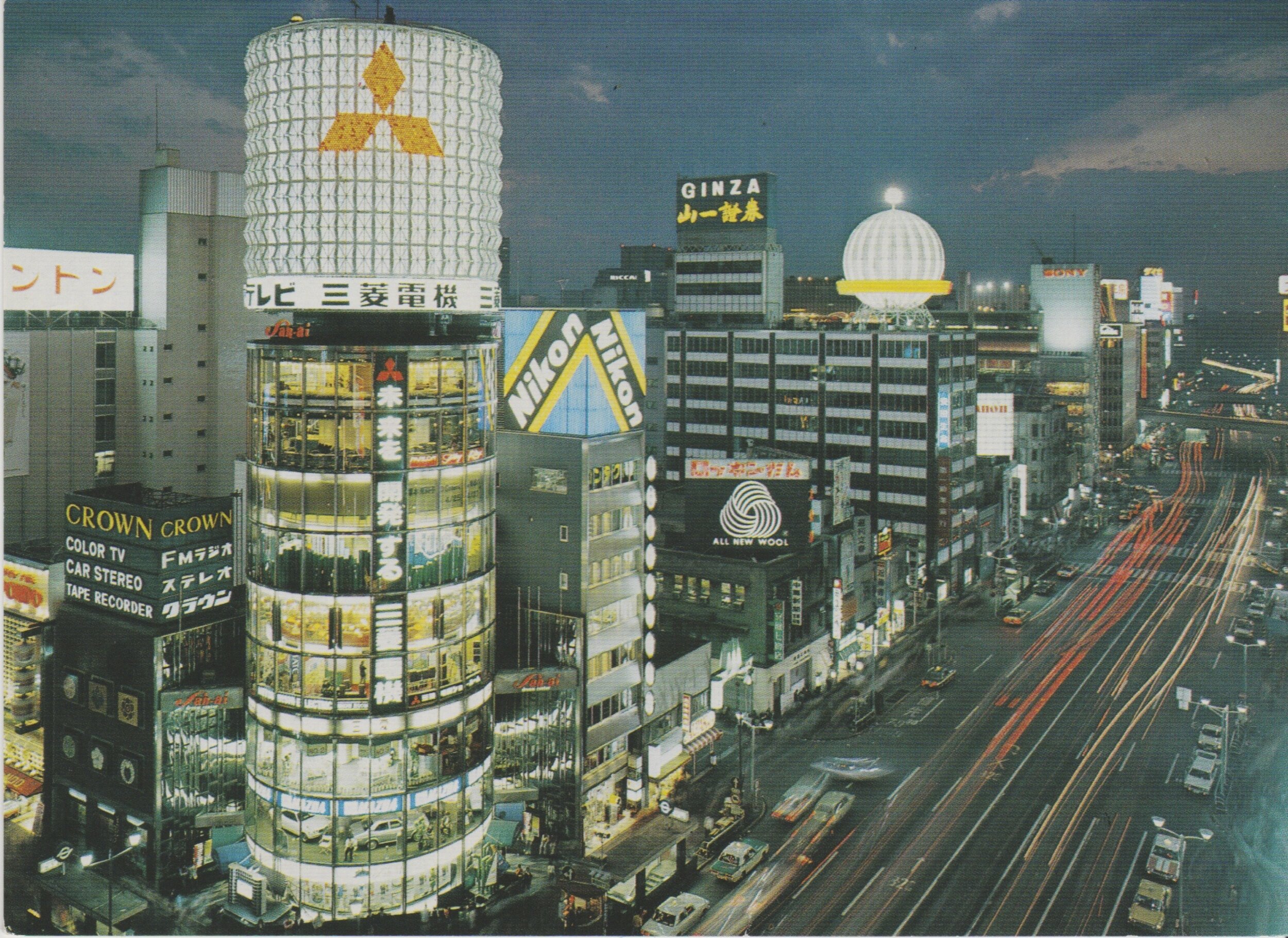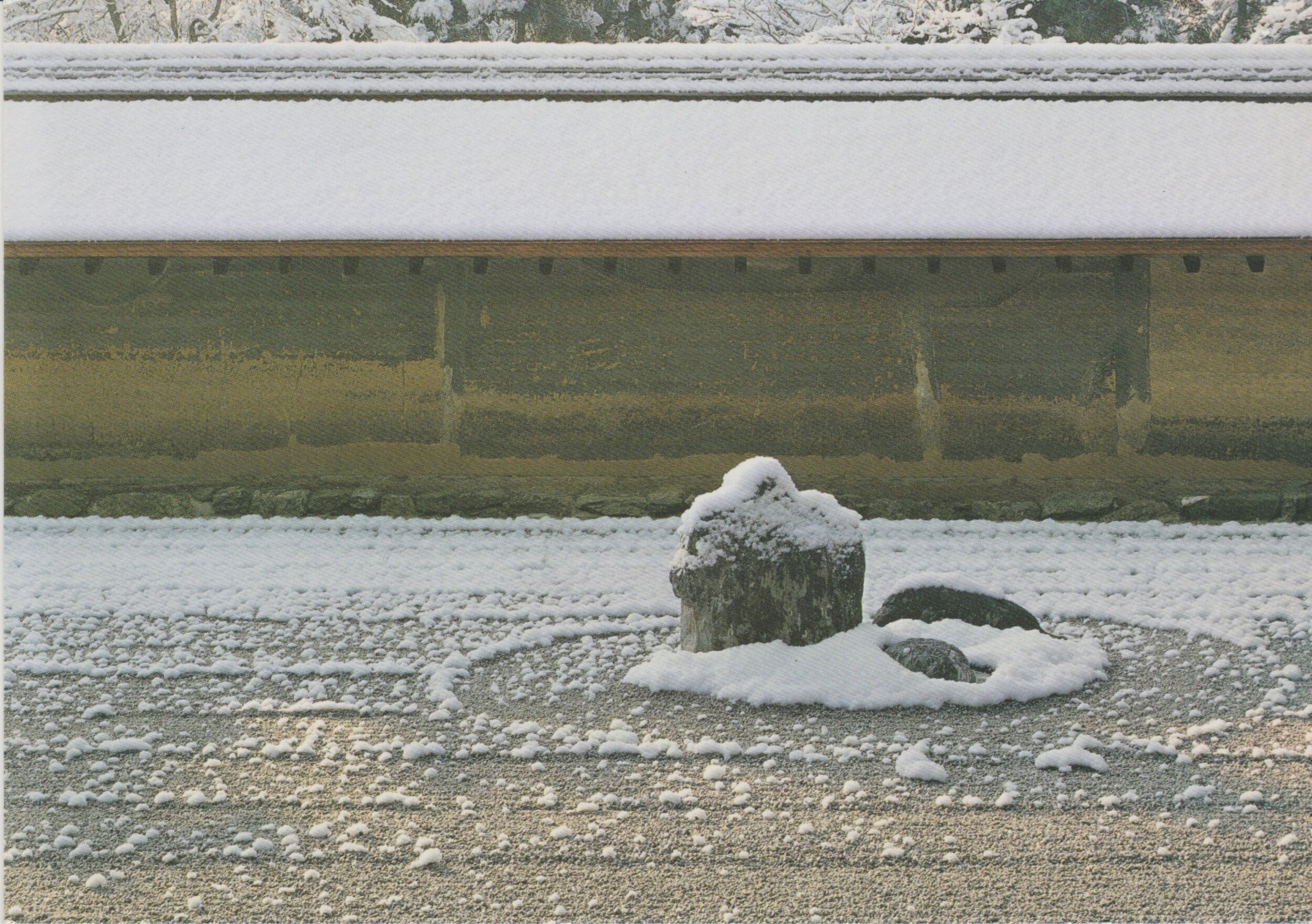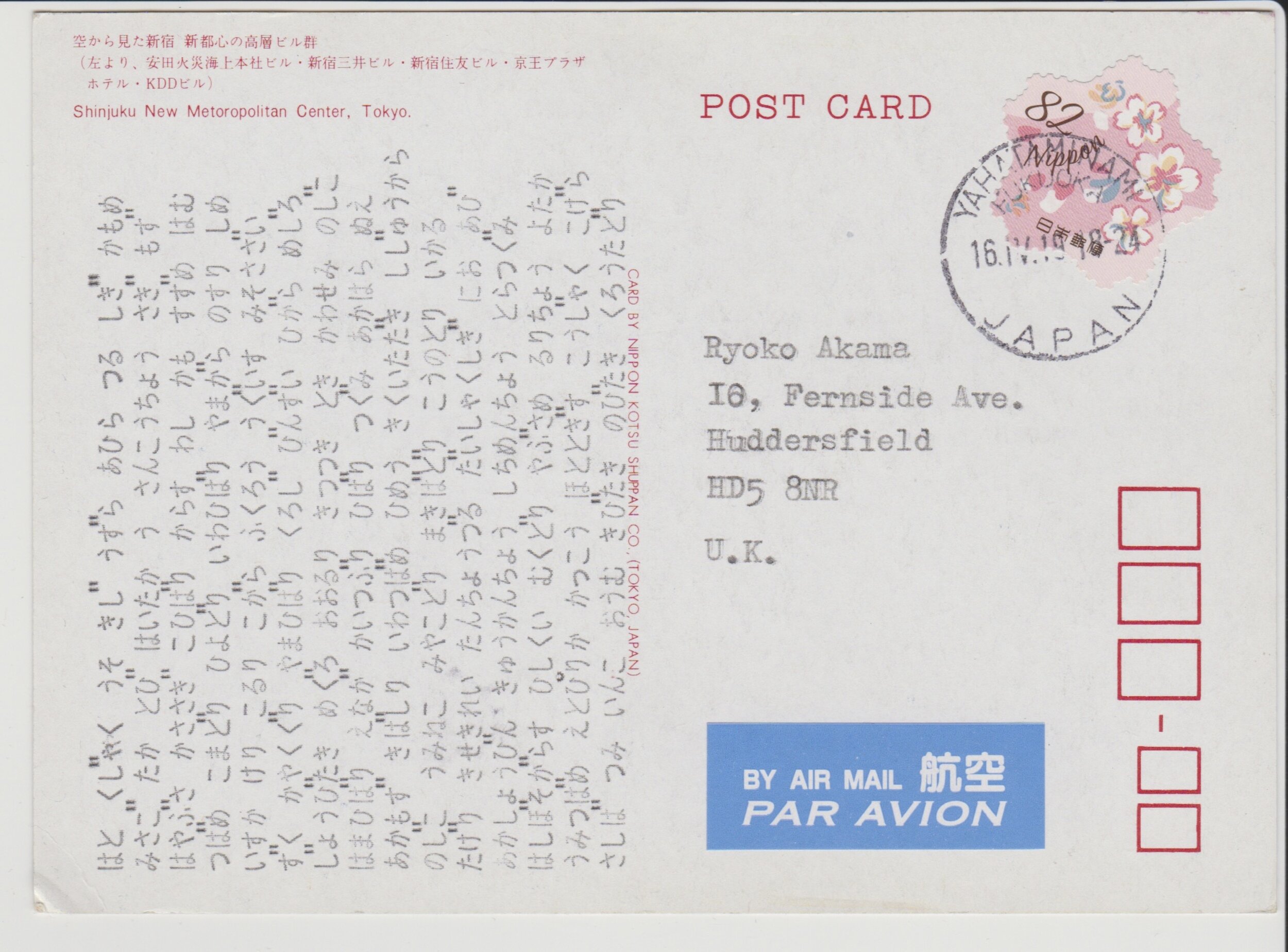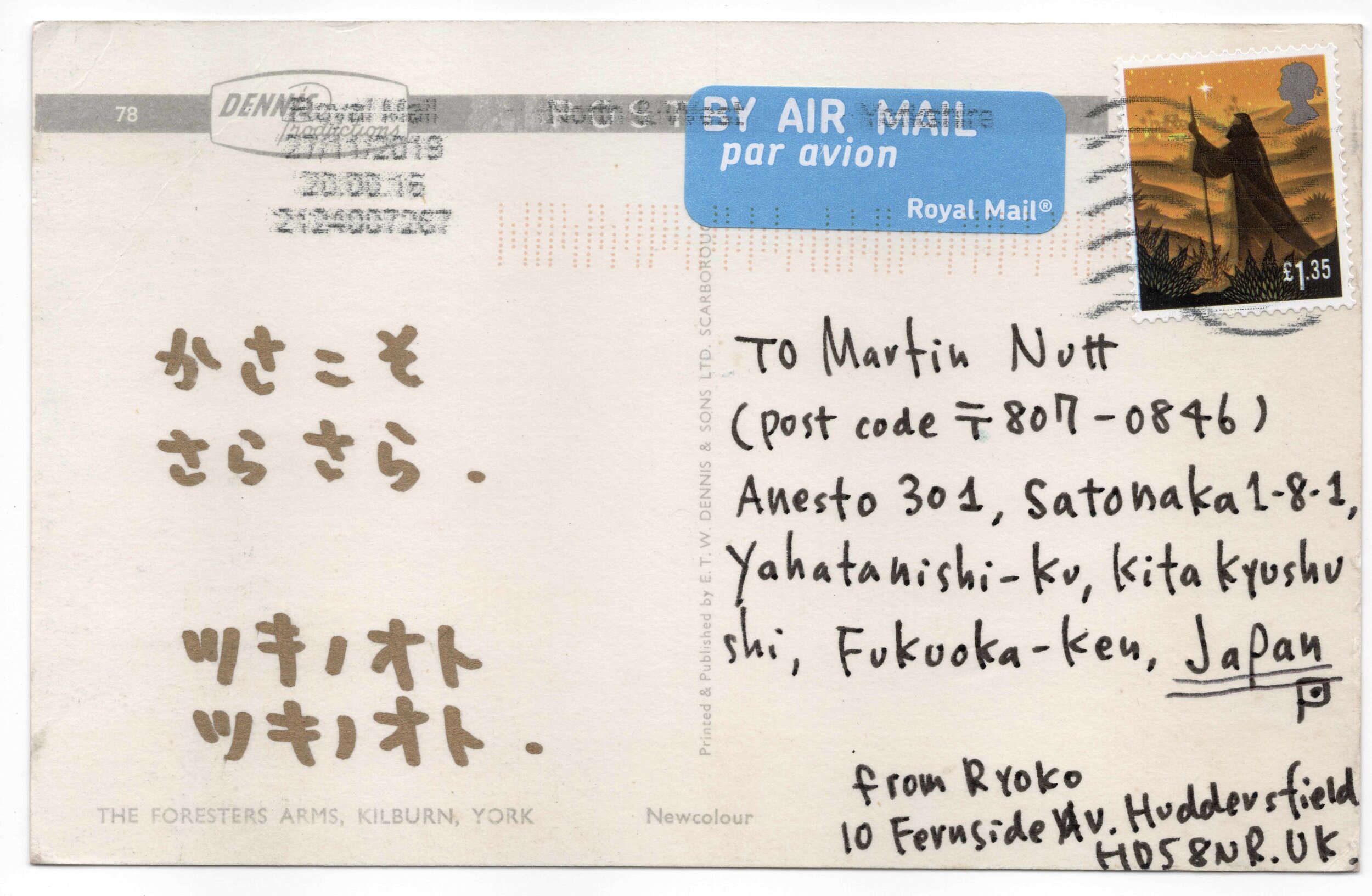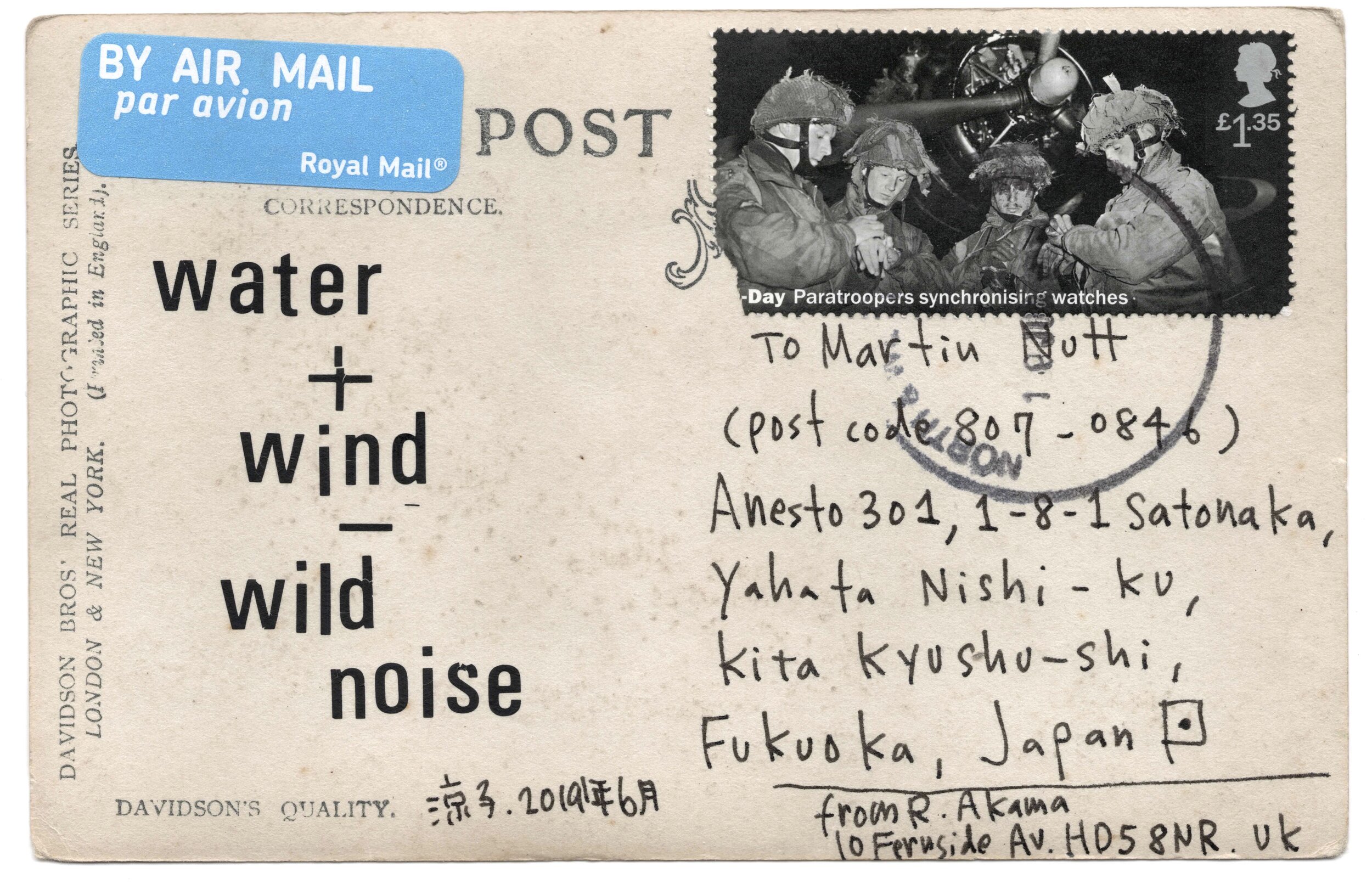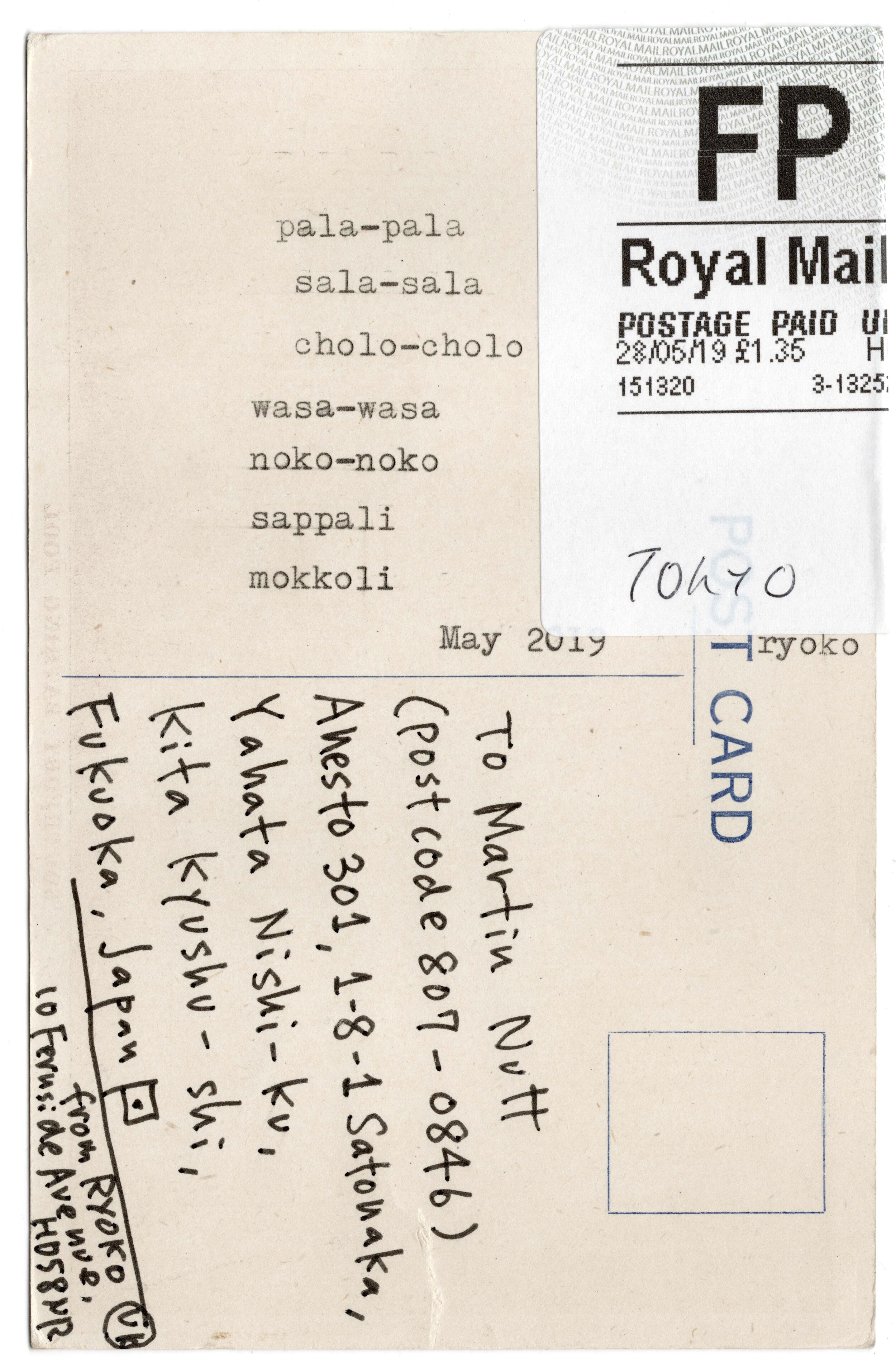twelve seasons’ is a composition by Martin Nutt and Ryoko Akama created through 12 months’ of postal exchange between Fukuoka, Japan, and Huddersfield, UK. The piece comprises 24 postcards embodying seasonal aural experiences. Below is a documentation of how Ryoko and I have realised these elegant and equivocal objects into audio and visual pieces. Instead of viewing the postcards as ‘scores’ in the traditional sense—in that they direct specific musical actions—we have used them as fragmentary, transitory connections between creative ideas, such that our work reflects their conception.
This project has been made possible by Leeds Inspired and the Arts and Humanities Research Council through the White College of Arts and Humanities (WRoCAH). We are extremely thankful for all their support throughout this unexpectedly longwinded project.
Ryoko and I first met in January 2020 during a gig at the Hepworth, Wakefield. I’d been a fan of her work—both sculptural and compositional—for a few years, so was excited to meet her and learn more about her practice. From that point onwards, we kept in contact, shared work with each other, and occasionally saw each other at concerts and events prior to the consequences of COVID-19.
In May 2020, Ryoko invited me to create a realisation of these postcards with her. As with lots of collaborative projects, these early stages comprised open-ended conversations, sporadic Facebook messages, and (certainly on my part) flurries of excited voice notes. It was playful; a big pool of ideas from which themes of dislocation and transportation started to emerge as concepts that already did and could speak to more so.
In June 2020, whilst visiting my childhood home, I made a realisation of the scores that Martin sent to Ryoko (so, 12 instead of the full 24) using my acoustic guitar, various objects including lots of glasses, and an organ. I recorded these parts in two locations: my parents’ garden in late afternoon such that the birds were chorusing loudly and the local village church, St. Mary’s. It was strange but lovely to record here—revisiting and using old childhood haunts to practise skills and ideas that I only acquired through growing beyond these spaces.
My performance of these postcards is relatively straightforward. For the guitars and objects, I simply took what I could from the postcards to inform my musical gestures as literally as possible. So, for example, if there were three of the same marks on the page making a descending line, I played three similar sounds in a descending fashion. For other cards that had a less clear literal realisation, I mimicked the sounds that they described as a centre for slightly improvised variations. Each of these fragments of material lasted for about two minutes and I performed them in a different order each time.
The organ part comprises 12 improvised drones, during which I added notes, gently pulled out stops, or anything else I could do to subtly manipulate the sound. I should say, I am absolutely not an organist—this part of the recording was totally guided by experimentation and playfulness. Indeed, I didn’t really use the scores to guide these drones, but, through using the scores to create the guitar and objects recordings, was led to composing this organ part. Rather than guiding a pre-planned musical action, the postcards brought me to a situation in which I had the opportunity to create something new: here, the postcards operated as ephemeral and unpredictable, transformational bridges between possible performances.
For me, there’s a lovely sense of dislocation within this process. To think where these postcards came from and where they led me (in fact, still somewhat lead me) and how these things are spatially and temporally so far apart, but bound together by these nexuses of connection between Martin, Ryoko, and me. Having editing these three performances together, I really do get a sense of these disparate ideas colliding to create something that’s sum is far greater that its parts (I very much recommend listening with headphones to appreciate the low-end organ wobbles).
This recording was only ever intended as a starting point for the process that Ryoko would then contribute to in some fashion. As with the treatment of the postcards, it offers a springboard into potentialities of work.
In September 2020, we secured funding from Leeds Inspired and the Arts and Humanities Research Council through the White College of Arts and Humanities (WRoCAH) for a live event. Held in Leeds and simply titled twelve seasons’, Ryoko and I had hoped to do two performances, the first at The Tetley and the other at Left Bank, interjected with a participatory soundwalk up the Aire Valley Towpath in November 2020. Both venue performances would have presented realisations of three of months’ worth of postcards, leaving the remaining six for the soundwalk.
We had planned to perform these postcards in a largely similar fashion to my initial recording: to follow the path of a literal gesture where possible, and where the postcards gestured towards the imaginative or metaphorical, to use those ideas as an area for improvisation. However, as a result of working collaboratively, this approaching differs from my original recording due to Ryoko’s performance practice that relies heavily on non-fixity and responsivity. For example, her piece shimatsu (始末), sits between performance, sculpture, and installation, as Ryoko wanders the performance space setting up small sounding objects, such as hearing aids resting in glass bottles or battery powered motors revolving small (often everyday) objects. Accordingly, the performances at both venues and along the canal would have comprised scenarios that audience members passed through—and sometimes would be invited to participate in such that they become actively entangled—rather than statically observed. Indeed, the then social distancing guidelines enforced a 2m distance between individuals, which this method of performance sought to creatively use.
Ahead of this cancelled performance, I also made some collages combining both Martin and Ryoko’s postcards with drawings and paintings of mine. We considered using these as the new prompts for performance but, in the end, decided against this.
In opting for a soundwalk, we hoped to draw out themes of dislocation and transportation from within the postcards. Between the nebulous zones of performance along the canal, empty spaces were intentionally left throughout which participants might listen (or not) as they like. As these moments were not part of the performances (there was no active sound making), they were treated as ‘non-places’: areas that do not hold any identifiable characteristics themselves but are productive and necessary in transporting peoples and ideas to new states. Indeed, actually, this discernible lack and dislocation become, paradoxically, characteristic of these spaces, highlighting the journey and treatment of the postcards. Unfortunately, this live event was cancelled due to national lockdown.
In January 2021, without hope of live events returning before the summer, Ryoko and I discussed how these ideas of dislocation and transportation might be explored and presented in a digital format. We decided on short video performance of only the soundwalk component of our now cancelled event. Editor Stephen Harvey compiled the materials—videos, my recordings from June 2020, and the postcards—such that they flow into and through each other so, as a consequence, beginnings and ends become unclear but there is a still a sense of ‘episodes’.
This sense of dislocation and non-fixity evoked through this method of editing reflects both Ryoko's process with Martin and how she and I have worked together through COVID, but also the content of the postcards themselves. Perhaps this a reflection of my practice more generally, but I love the idea of creating something that feels only like a fragment of a larger process, a glimpse into an ambiguous transformational period without clear starts and ends. There might be a sense of linearity, but never anything that really gives rise to an overall 'goal' as such.


